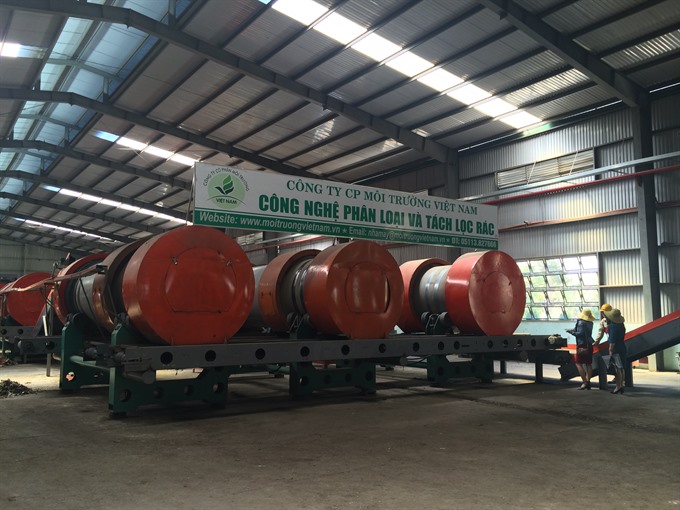City to develop waste-to-energy project
Da Nang plans to build its first waste-to-energy project at the Khanh Son Dump.
 |
| A waste processing system is seen at the Khanh Son waste recycled plant. Da Nang plans to invest the first waste-to-energy project in the second stage. |
The 2.3 trillion VND (101.7 million USD) project, which will be developed from the already invested first phase of a rubbish recycled plant from 2015, will help process 1,000 tonnes of garbage each day to supply fuel for power generation from 2022.
Director of the Viet Nam Environment Joint-Stock Company, Mr Nguyen Van Tuan, the investor of the Khanh Son waste recycled plant, said the plant, which was built on 20ha from 2015, will process 200 tonnes of garbage including plastic waste into fuel oil, bricks and compost with an investment of 400 billion VND (19 million USD) initially.
He said the plant will build a waste incineration in the second stage to combust waste into electricity from 2022 as Da Nang looks to become a more environmentally friendly city.
Mr Tuan said the project is currently completing environmental impact assessments before construction begins.
Once operational, 100 tonnes of solid garbage could be used to produce from 1.5MW (megawatt) to 2MW of power.
According to the Viet Nam Association for Conservation of Nature and Environment, incineration technology could cut 80 per cent of solid waste as it uses thermal energy from the garbage furnace to generate power.
Da Nang produces 870 tonnes of garbage each day, of which 95 per cent is collected, and only 10 per cent recycled, while an incineration system only processes 200kg of medical solid waste in one hour.
Last year, Da Nang and the Asia Development Bank signed an agreement to develop a new landfill and waste treatment facility, using a public-private-partnership scheme in which the private sector will design, build, finance, operate and maintain the waste disposal and treatment facilities.
(Source: VNS)